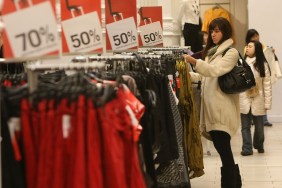
Image courtesy Zady
tFS: Could you tell me more about some of the challenges associated with creating a fully ethical garment?
MB: It starts with the material selection…we first went through our closets and found the pieces we wore the most often and which seemed to fall apart. The ones we appreciated the most were made from natural materials — think wool, cotton, silk, cashmere. This fell in line with our environmental concerns, synthetical material is made from petroleum, the product used to dye this material is extremely harsh and are known carcinogens. Plus, when that material breaks down in the landfills, it’s extremely hazardous to the environment.
So, we start with natural materials. Then we look at each step of production, ensuring that the farming practices do not lead to runoff and are not pesticide dependent. Then we look at the dye houses and ensure that we are using environmentally-friendly dyes and partnering with dye houses that have waste treatment facilities, so we don’t contribute to water contamination.
And then finally, we look to the cut-and-sew stage and make sure we are partnering with houses that we trust. A lot of that trust comes from only partnering with companies throughout the whole supply chain that work in countries with strong regulatory environments. So, we tend to work in the U.S. and with EU countries. We want to avoid the “shadow factory” system that has plagued other countries like China and Bangladesh.
tFS: Do you think it’s possible to produce ethically in China?
MB: At this moment, no, unless a company is willing to have its team on the ground 365 days of the year, which no company does. Instead, they stop by, take nice pictures, go through their checklist, while the real work of their order is very often done in a shadow factory with no regulations and no one looking out for the workers.
SD: Brands like to say “this factory is certified” by X, Y, Z standards, but from our research, many, many brands don’t understand that when they contract a factory in China, the work is often subcontracted to other factories — and therein lies the problem with modern supply chain. The industry is cloaked in secrecy.

Image courtesy Zady
tFS: What else do you think needs to happen for American and global attitudes about clothing consumption to change?
MB: It’s really a matter of becoming aware of the situation. We went through this phase with food. Before we consumed food that was bad for us and bad for the environment, but we learned about the impact and we have changed our ways. We don’t blame consumers, it wasn’t until we really started digging into things that we even realized the enormity of the problem with our addiction to fast fashion.
It’s our job as an industry to help consumers become aware. Once they do become knowledgeable, it only makes sense that we all change our consumption patterns. And you know what? It feels great. It’s wonderful to not be beholden to fast-changing trends, and just buy style. It’s that je ne sais quoi that the french women have. They buy for themselves, for quality over quantity.
SD: We want people to know that alternatives are arriving to fast fashion, Zady is amongst them. The goal is not to make the customer feel overwhelmed and certainly not shamed, but rather empowered. Change is on the horizon, and that feels really, really good.
Related:






